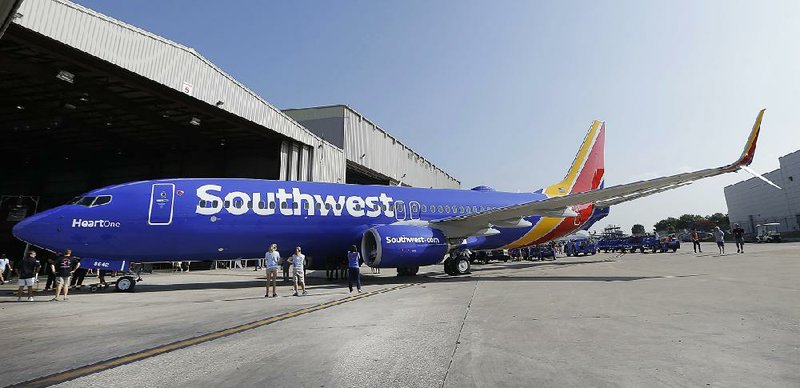DALLAS -- When Southwest Airlines recently introduced a new paint job for its planes, a senior executive joked that at 43 years old and being from Dallas, it was time for the airline to get a face-lift.
At middle age, Southwest is the fourth-largest U.S. airline by traffic, setting records for profits and enjoying a stock-price rally. But it wants more. Most of 2014 has been spent trying to regain the dazzling growth of its earlier years.
Help is on the way. It has launched its first long-distance flights from its home base at Dallas Love Field to seven cities across the country, with eight more destinations in November. Such flights were prohibited until now by a longtime law that protected Dallas-Fort Worth International Airport by limiting flights from Love Field to a few nearby states.
Southwest will go head-to-head with Fort Worth-based American Airlines, which flies to most of those same 15 cities from DFW Airport. There will also be a new competitor at Love Field: Virgin America, whose swashbuckling founder, Richard Branson, is flying in for the occasion.
Chief Executive Officer Gary Kelly says bookings for the new flights are strong, and demand could outstrip seats. He believes the Love Field expansion presents "very significant growth opportunities for us." Already this year, Southwest has started its first international flights to Mexico and the Caribbean and grown in New York and Washington.
Southwest was once a legendary growth story. From three planes in 1971, it grew to 70 by 1985, and was flying more than 400 planes by the middle of last decade. But aside from the $1.4 billion purchase of AirTran Airways in 2011, Southwest Airlines Co. has hardly grown in recent years. Instead it has focused on meeting profit-margin goals to satisfy Wall Street.
On-time performance, once a hallmark, has slipped badly. In the most recent 12-month period, only 71 percent of Southwest's flights arrived on time, last among the largest U.S. airlines, according to government figures. Airline executives thought they could squeeze in more flights with no new planes, but the move backfired, resulting in delays and missed connections. Recently, Southwest tweaked its schedule to allow more time between flights.
Still, Southwest had the lowest rate of consumer complaints in August, the latest month for which figures are available. Customers like that Southwest has fewer fees -- it is the only major airline that lets passengers check two bags for free.
One afternoon recently at Love Field, Bill Gibson of Oklahoma City was at the baggage carousel, waiting for the video gear he uses to shoot car commercials. He said he has flown Southwest for 20 years.
"For the longest time, you got three bags free. Now you get two, which I can still make work -- that's the big thing for me," Gibson said.
But Southwest isn't for everyone. Unlike American, United and Delta -- or even its own AirTran subsidiary -- Southwest doesn't have a first-class cabin to lure premium passengers.
"You don't have that level of luxury travel. You're part of the herd of cattle," said Michelle Pontrelli of Dallas. She said Southwest is fine "for getting somewhere in Texas quickly," but she was more intrigued by the Love Field arrival of Virgin America, which sells first-class seats.
Southwest made its reputation by keeping costs down and competing with low fares. But new, ultra-low-fare carriers such as Spirit Airlines -- and the success of other big airlines at cutting costs through bankruptcy -- are putting more pressure on Southwest.
Southwest pays about $124 per seat to fly 1,000 miles. That's less than American, United and Delta, but higher than JetBlue, Virgin America and Spirit. The figure is 27 percent higher than five years ago, mostly because of fuel prices.
With those rising costs, Southwest has pushed its average one-way fare to $163 this summer, up from about $110 five years ago.
Southwest, which has had remarkably good labor relations for an airline, is locked in drawn-out contract negotiations with pilots, flight attendants, mechanics and other workers. Profit is expected to grow more than 65 percent to nearly $1.3 billion this year, and employees are seeking better pay and benefits.
Union leaders say the stalemate hurts morale just when the airline's team spirit should be at an all-time high. Kelly counters that Southwest employees enjoy industry-topping pay, job security and profit-sharing.
"The magic is not gone," he said on the day that Southwest unveiled the new airplane paint job to several hundred cheering employees.
Travel on 10/26/2014
